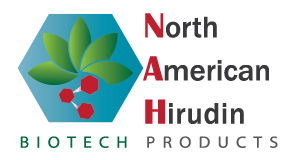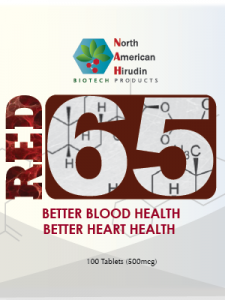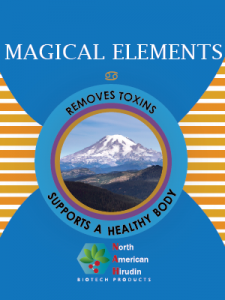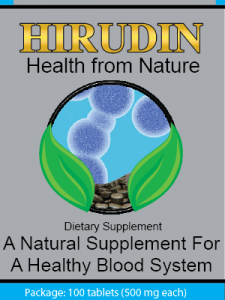Is hirudin a potential therapeutic agent for arthritis?
Author: K Scott, School of Biological Sciences, University of Auckland, Private Bag 92019, Auckland, New Zealand, k.scott@auckland.ac.nz
A recent pilot study by Michalsen et al showed that a single brief treatment with medicinal leeches (Hirudo medicinalis) can give relatively long term relief from pain in osteoarthritic joints. A number of leech salivary components are known, which may contribute to this effect.1 Although there was no evidence for any therapeutic outcomes, other than pain relief, the extended timescale suggests that one or more leech components may exert more than an anaesthetic or analgesic effect. Independent evidence indicates that the leech anticoagulant protein, hirudin, may make a significant contribution to this phenomenon.
A synovial stimulatory protein (SSP), acting as an autoantigen to which T lymphocytes from patients with rheumatoid arthritis respond, has been identified in synovial fluid.2 A smaller protein, derived from human fibroblasts, and identifiable from its amino acid sequence as a fragment of the SSP, has been found to bind to a hirudin-agarose affinity chromatography matrix.3 More recently, we have shown that both the SSP and its smaller derivative, now known as the DING protein, are found in synovial fluid samples and synovial fibroblasts from normal subjects, and from patients with a range of arthritic conditions, includin rheumatoid and osteoarthritis. The proteins act as autocrine growth stimulators for normal and arthritic synovial fibroblasts.4 The presence of hirudin can inhibit this stimulation.3 Given that hyperproliferation of synovial fibroblasts is believed to contribute to the formation of the destructive pannus that is characteristic of some arthritic joints,5 the SSP and DING protein may act to promote this process, and hirudin may have the potential to retard it. Hirudin might thus have value in treating arthritis. Recombinant hirudin has already been used in a range of therapeutic anticoagulant applications,6–8 so patient safety and other clinical data have been collected and evaluated. A trial of hirudin in an antiarthritis role may now be appropriate.
The first DING protein isolates displayed proteolytic activity, and its inhibition was believed to be the basis of the action of hirudin, but subsequent DING preparations have had little or no proteolytic activity.3,4 The basis of the inhibitory action of hirudin is thus not known. Peptides derived from hirudin such as hirulog (bivalirudin), which are effective anticoagulants by virtue of thrombin inhibition,9,10 may not possess the ability to bind and inhibit the SSP or DING proteins.
Acknowledgments
The experiments from the author’s laboratory were supported by the Auckland Medical Research Foundation, and the Staff Research Fund of the University of Auckland.
REFERENCES
- ↵
Michalsen A, Deuse U, Esch T, Dobos G, Moebus S. Effect of leeches therapy (Hirudo medicinalis) in painful osteoarthritis of the knee: a pilot study. Ann Rheum Dis2001;60:986.
- ↵
Hain NAK, Stuhlmuller B, Hahn GR, Kalden JR, Deutzmann R, Burmester GR. Biochemical characterisation and microsequencing of a 205kDa synovial protein stimulatory for T cells and reactive with rheumatoid factor containing sera. J Immunol1996;157:1773–80.
- ↵
Bush D, Fritz H, Knight C, Mount J, Scott K. A hirudin-sensitive, growth-related proteinase from human fibroblasts. Biol Chem1998;379:225–9.
- ↵
Adams L, Davey S, Scott K. The DING protein: an autocrine growth-stimulatory protein related to the human synovial stimulatory protein. Biochim Biophys Acta (in press).
- ↵
Mizel SB, Dayer JM, Krane SM, Mergenhagen SE. Stimulation of rheumatoid synovial cell collagenase and prostaglandin production by partially purified lymphocyte-activating factor. Proc Natl Acad Sci USA1981;78:2474–7.
- ↵
Topol E, GUSTO IIb investigators. A comparison of recombinant hirudin with heparin for the treatment of acute coronary syndromes. N Engl J Med1996;335:775–82.
-
Reilly MP, Weiss R, Askenase A, Tuite C, Soulen M, Mohler ER. Hirudin therapy during thrombolysis for venous thrombosis in heparin-induced thrombocytopenia. Vasc Med2000;5:239–42.
- ↵
Saner F, Hertl M, Broelsch CE. Anticoagulation with hirudin for continuous veno-venous hemodialysis in liver transplantation. Acta Anaesthesiol Scand2001;45:914–18.
- ↵
Maraganore JM, Bourdon P, Jablonski J, Ramachandran KL, Fenton JW. Design and characterisation of hirulogs, a novel class of bivalent peptide inhibitors of thrombin. Biochemistry1990;29:7095–101.
- ↵
Kong DF, Topol EJ, Bittl JA, White HD, Theroux P, Hasselblad V, et al. Clinical outcomes of bivalirudin for ischemic heart disease. Circulation1999;100:2049–53.







